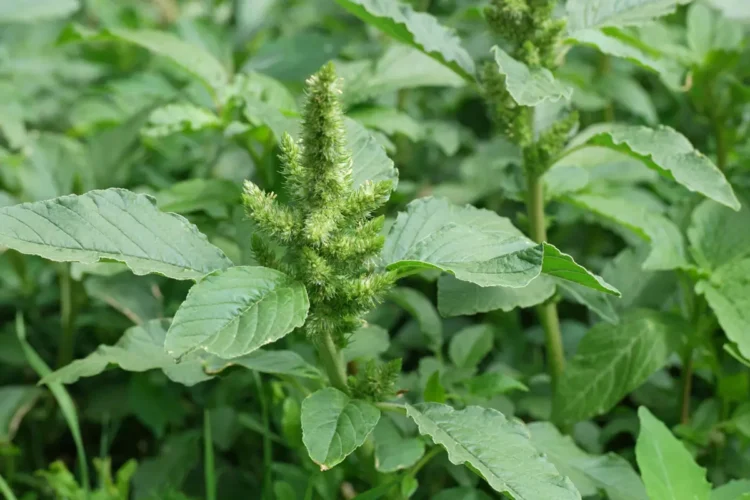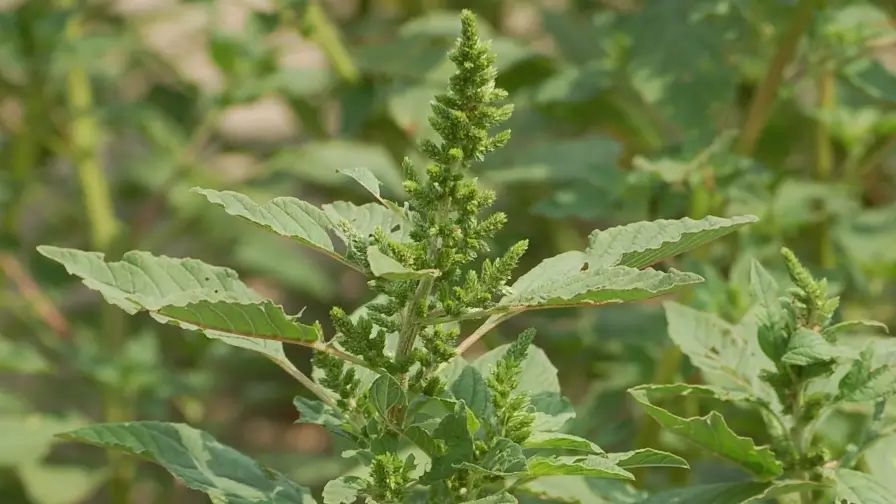Beautiful Plants For Your Interior
Pigweed

Quick Weed Facts:
Shape: Coarse, very tall erect herb
Colour: Dull green plant/leaves
Family: Amaranthaceae Genus: Amaranthus
Main Species: Pigweed (Amaranthus retroflexus)
Other Names: Redroot amaranth, Careless weed, Tumbleweed, Callaloo, Wild-beet amaranth, Rough pigweed, American and Smooth pigweed, Common amaranth, Pigweed amaranth, and Common tumbleweed
Most Active Growing: May – Nov
Weed Type: Annual
Amaranth or Pigweed plants have entered the UK through various means, including being carried in birdseed. They are most commonly found in the warmer and drier areas of the country, such as East Anglia. The weed thrives in soil that is loose, crumbly, and high in nitrogen content.
Tis weed has coarse, green to reddish stems, often with fine hairs (pubescent) and very erect. It potentially has a very long and deep branching taproot.
Above ground ‘branching’ occurs higher up on the plant. It’s an ‘annual’ herb that can grow up to 6.6 ft (2mtrs) tall with distinct ‘reddish’ colouration on the roots, lower stems, and undersides of leaves which are ‘alternate‘, dull green, egg – to diamond-shaped with a small ‘notch’ at the tip, and have smooth to wavy margins (the edge of the leaf).
Flowering takes place from June to November. The branches that are in bloom are filled with flowers that are closely packed together. The flowers are not very noticeable and they come together to create dense, usually rigid, spike-shaped clusters at the ends of the branches, with smaller clusters also forming between the main stem and the leaf stalks.
Pigweed: Not Noticeable, Spike-Shaped Clustered Flowers And Reddish Colouration On The Underside of Leaves Are Identifiable Pointers
How is it Spread?
A prolific weed known for its rapid growth and massive seed production, spreads primarily through its seeds. These seeds once dropped, are capable of remaining dormant in the soil for years until ideal conditions trigger germination. These tiny seeds can also ‘hitch’ a ride on various vehicles:
- Farm equipment: Contaminated equipment used in harvesting or tilling can unintentionally transport seeds to new areas.
- Water: Seeds can travel long distances through waterways like irrigation canals or after heavy rain.
- Animals: Birds and mammals can consume and then disperse seeds through their droppings.
- Wind: Light enough to be carried by wind, seeds can establish themselves in far-off locations.
- Manure and compost: Incomplete composting processes might leave viable seeds behind, introducing this invasive weed to gardens or fields.
This relentless seed dispersal strategy makes this weed a tenacious foe for gardeners and farmers. Understanding these methods of spread is crucial for implementing effective control measures to prevent Pigweed from taking over.
Control
Battling (Amaranthus retroflexus) requires a multi-pronged approach. Here are some effective strategies that together may help :
Preventative Measures:
- Minimise soil disturbance: ‘Tilling’ brings buried seeds to the surface, promoting germination. Consider alternative methods like ‘cover crops‘ to suppress seed emergence.
- Mulch: Apply a thick layer of mulch around desirable plants to smother emerging seedlings and restrict light access.
- Pre-emergent herbicides: Consider using pre-emergent herbicides before Pigweed germinates. Always follow label instructions carefully to ensure proper application and avoid harming desired plants.
Direct Control Methods:
- Hand pulling: For small infestations, hand-pulling young plants before they flower is effective. However, ensure you remove the entire root system to prevent regrowth.
- Mowing: Mowing frequently can prevent ‘Pigweed’ from setting seed. However, be mindful not to mow after flowering, as this can spread seeds further.
- Post-emergent herbicides: For established plants, selective herbicides targeting broadleaf weeds can be effective. Choose a product suitable for your specific situation and follow label instructions for safe and efficient application.
Additional Strategies:
- Crop rotation: Rotating crops disrupts the weeds lifecycle and reduces its ability to establish dominance.
- Encourage beneficial insects: Certain insects like beetles and crickets prey on Pigweed seeds, helping with natural control.
By combining these methods and adapting them to your specific situation, you can effectively control Pigweed and prevent it from becoming a persistent problem. Remember, the key is to focus on preventing seed production through a combination of cultural practices and targeted control methods.

A Multi Task Approach is Required For Pigweed Control
FAQ’s
Can Pigweed Be Composted?
It is generally not recommended to compost this weed, as it can potentially spread its seeds and regrow in the compost. It is best to dispose of Pigweed in a way that prevents it from spreading further.
Is Pigweed Harmful To Pets Or Humans?
No, is not known to be toxic to pets or humans, but it can cause discomfort if ingested. It is best to prevent its growth and avoid contact with the plant.
Are There Any Specific Environmental Conditions That Favour The Growth of Pigweed in the UK?
Growth can be influenced by various factors, including soil conditions, moisture levels, and temperature. Understanding these factors can aid in developing targeted management strategies.
Does Pigweed Have Any Beneficial Uses In The Garden?
While ‘Amaranthus’ is generally considered a weed, some gardeners use it as a green manure or compost material. However, its invasive nature requires careful management to prevent it from taking over the garden.
Conclusion
Pigweed may be a persistent weed, but it’s not invincible. By understanding its spread and implementing a combination of preventative and control measures, you can effectively manage this unwanted guest in your garden or field.
Remember, consistent effort is key. Focus on preventing seed production through practices like ‘mulching’ and crop rotation, and employ targeted control methods like hand-pulling or herbicides when necessary. With a little persistence, you can keep this weed at bay and create a thriving, Pigweed-free environment.
